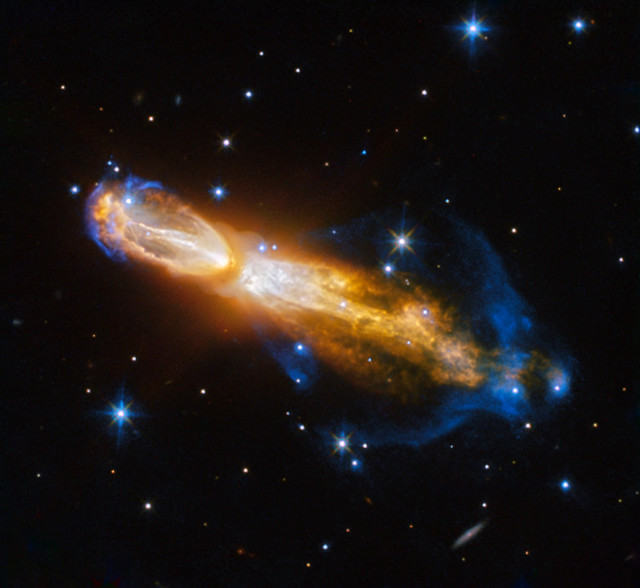
A photograph taken by the Hubble Space Telescope shows the Calabash Nebula, a protoplanetary nebula showing the agony of a low-mass star like the Sun. This nebula is also known by the nickname Rotten Egg Nebula because its study revealed that in the gas surrounding it there’s a high concentration of sulfur, the element that causes the characteristic rotten egg smell.
The expression “protoplanetary nebula” is wrong in the sense that in fact this type of nebula has nothing to do with planet formation. It comes from “planetary nebula”, which in the past was used to indicate nebulae that to old telescopes, limited compared to the ones we have today, showed similarities with the solar system’s gas planets. These expressions remained in astronomical jargon and can lead to confusion.
The protoplanetary nebula phase immediately precedes the planetary nebula one so in recent years is also called preplanetary nebula. According to astronomers, this phase will be be over within a millennium or so, a time that seems long but in astronomical terms is really a blink of an eye. For this reason, the discovery of the Calabash Nebula is a stroke of luck.
The current phase follows the red giant one and a few centuries ago started ejecting the outer layers of gas and dust into space. In the Calabash nebula, technically indicated as OH 231.8+04.2, the materials are ejected in opposite directions at extremely high speed. In the image the gas shown in yellow is moving at nearly one million kilometers per hour.
This new image is the result of a composite of separate exposures obtained in visible and infrared light from three different Hubble space telescope’s instruments: Advanced Camera for Surveys (ACS), Wide Field and Planetary Camera 2 (WFPC2) and Wide Field Camera 3 ( WFC3). Various wavelengths were sampled using nine different filters and the colors derived from assigning different hues for each monochrome image associated with a single filter.
The Calabash nebula is relatively close since it’s about 5,000 light years away from Earth. This too is a stroke of luck because it will help to study it, also with the instruments that will be built in the future, to better understand the final stages of the life of stars like the Sun.

